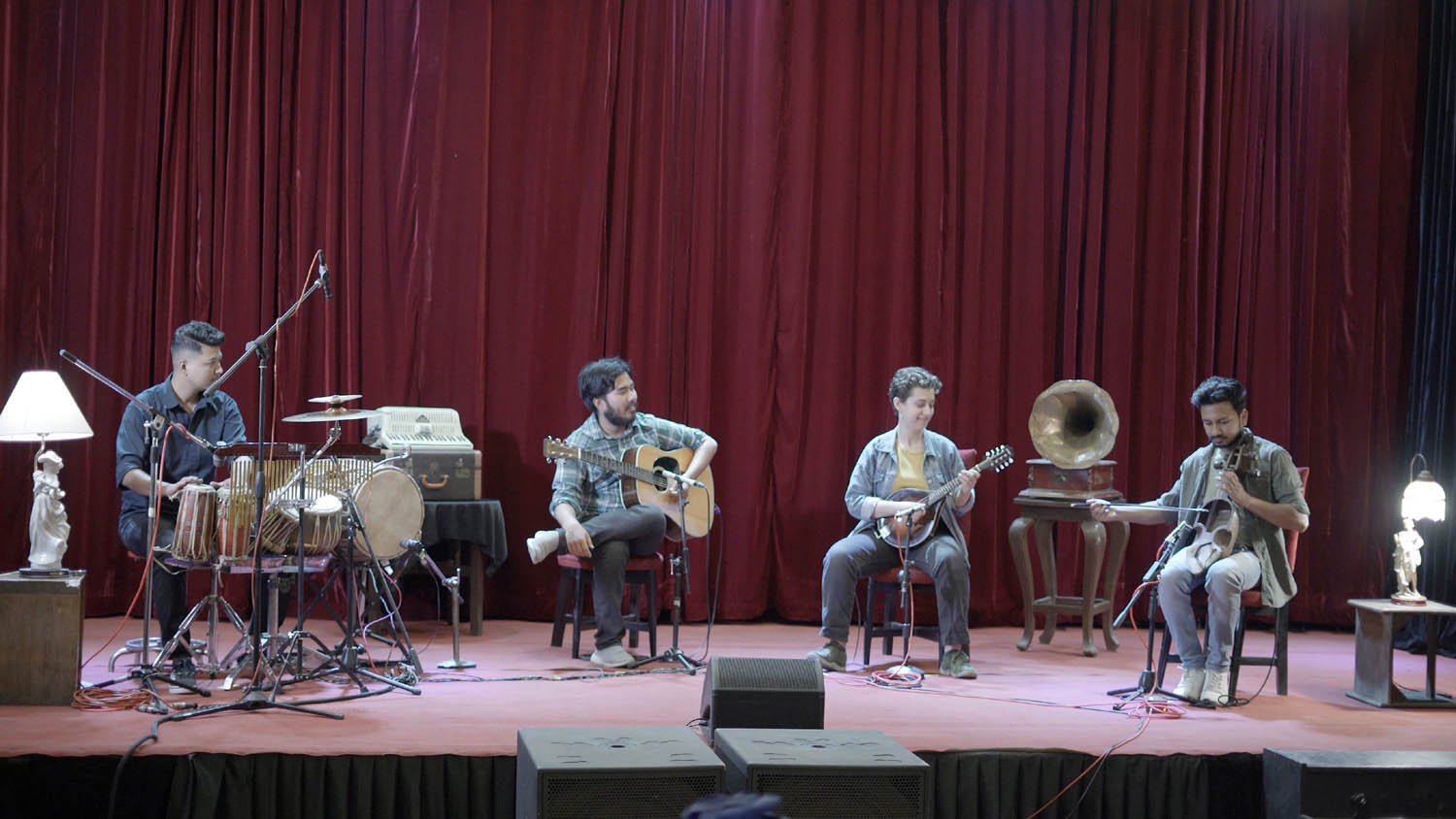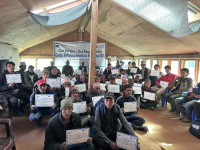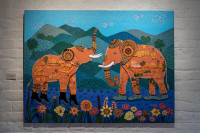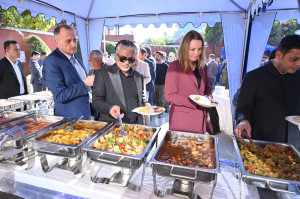Culture & Lifestyle
In tune with tradition
The Himalayan Highway band creates a distinctive sound by seamlessly blending Nepali folk music and American bluegrass.
Manushree Mahat
Stepping away briefly to answer a call, I watched as Prince Nepali, Zoe Levitt, Yuson Maharjan, and Anish Tamang, collectively known as Himalayan Highway, playfully surrounded my phone, creating amusing noises. Upon replaying the recording, I realised they had actually spontaneously created a song. The rhythmic beats of the table, the soft clinks of glass, and the deep hums blended seamlessly, forming a beautiful melody that took over my recording. In that short moment, their natural chemistry and shared love for music became evident to me.
Members of Himalayan Highway met in different phases of their lives, and it took some time for them to tune their dynamics and form a cohesive group. Nepali, who has been active in the Nepali music industry for the past 20 years as a Sarangi player, played with Maharjan in Vairabi, an instrumental band. Nepali and Tamang, originally from Hetauda, connected 5 years ago and frequently jammed together. Their paths continued to intertwine, but the band truly took shape when Levitt met Nepali during her trip to Nepal in 2022.
Levitt, a graduate of MIT’s geology bachelor’s programme, recalled a friend and fellow bluegrass musician, Tara Linhardt, telling her about the similarities between American bluegrass and Nepali folk music. Keeping that in mind, she came into contact with Shyam Nepali, a sarangi player and father to Prince Nepali, who then told her about his son. Fast forward to 5 years later, she met Prince in her pursuit of music and songwriting in Nepal. Nepali, a fourth-generation sarangi player, found a possible band-mate in Levitt as they explored folk and bluegrass music together. They were soon joined by Tamang, a left-handed guitarist (a rarity amongst guitar players, I’ve been told), and Maharjan, a versatile percussionist. Initially, flautist John Rashin Singh was also a part of the band, but he is no longer involved with them as he doesn’t live in Nepal right now.
As they started playing together, they began melding their backgrounds in bluegrass and Nepali folk music. Levitt would play a bluegrass song on her mandolin, and the other members would list (and play) Nepali folk songs that matched the vibe. For instance, when Levitt played ‘Squirrel Hunters’, they found it blended seamlessly with ‘Man Chade’, fusing Nepali and American music together in a pleasant harmony.
The members reveal that adjusting to this fusion music was challenging due to their diverse musical backgrounds. Tamang, who has a background in Western classical music, found it difficult to adapt to folk music. Despite the initial struggles, his determination to represent Nepali folk music in the contemporary musical landscape paid off, and this shaped the band’s distinctive sound.
Maharjan, who is from a family of Newa musicians, faced significant differences between the rhythms of bluegrass and Nepali folk. “Yuson serves as the foundation of our band, and we are still working on integrating percussion more effectively into our music,” says Levitt.
The band was previously called ‘Manaslu Blue’. The name change reflects their dedication to showcasing their fusion music. Nepali folk music, rooted in the mountains, resonates with American bluegrass history. Both names signify unity across geographical boundaries through music. The band says they chose ‘Himalayan Highway’ as they feel it will resonate with a wider audience.
“We aim to represent Nepal globally through our music. The name change marks the beginning of our journey,” says Nepali.

Following their well-received performance at Moksh in Jhamsikel, Lalitpur, in the autumn of 2022, Himalayan Highway found renewed motivation. The positive audience reaction reinforced their confidence, marking a turning point for the band. Since then, they’ve focused on fine-tuning their music, strengthening their camaraderie, and shaping their original compositions. Additionally, they take pleasure in surprising their audience by introducing unique elements during their concerts.
“We enjoy surprising our audience by going back and forth between Nepali folk songs and bluegrass music. It’s fun playing something that the audience is familiar with and then giving something new,” explains Levitt.
The band’s approach to concerts has evolved over the years. While entertaining the audience has remained important to them, they now also aim to educate their audience about Nepali and American folk music.
Himalayan Highway members collaborate smoothly and try not to overwhelm each other while working. They usually plan and move forward with the band’s career deliberately and carefully. Since their successful Moksh concert, they’ve been crafting an album, with most tracks recorded two months ago. Despite this progress, they’ve delayed its release to ensure the best possible output.
“We’ve been patient with the process. Since the Moksh concert, we’ve rehearsed extensively. We want to reimagine Nepali and American folk music, offering a fresh perspective to the musical scene. We’re taking our time to understand the music we want to make,” says Levitt.
Himalayan Highway does have a lot planned for the near future. They are gearing up to perform at the upcoming Jazzmandu, and have initiated preparations for an international tour. The positive response they have been getting recently has also fueled their enthusiasm for their future endeavours.
“When we feel good about our music, it resonates with our audience too. We’re a band that has fun—we enjoy each other’s company and have a blast working on music together. Now, we just want to transcend our collective love and appreciation for folk music to the next level,” says Nepali.




 19.12°C Kathmandu
19.12°C Kathmandu















